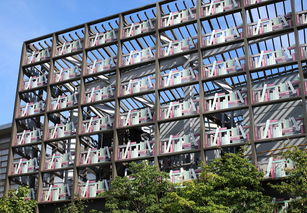屋顶花园设计图怎么画
Title: Crafting the Perfect Rooftop Garden Design
Creating a rooftop garden is a beautiful way to utilize urban space, bringing nature into the cityscape while also offering a serene oasis for relaxation and leisure. Here's a comprehensive guide on designing your rooftop garden:
1. Assess Your Space:
Structural Integrity
: Ensure your rooftop can support the weight of a garden. Consult with a structural engineer if necessary.
Sunlight Exposure
: Determine the sunlight patterns throughout the day to plan the layout of your garden accordingly.
Wind Exposure
: Assess wind conditions to select suitable plants and design windbreaks if needed.2. Design Elements:
Greenery Selection
: Choose plants that thrive in your climate and rooftop conditions. Consider droughtresistant plants to minimize water usage.
Container Gardening
: Opt for lightweight containers made of materials like fiberglass or plastic to reduce weight load on the rooftop.
Vertical Gardens
: Utilize vertical space with trellises, hanging planters, or green walls to maximize greenery without sacrificing floor space.
Seating Area
: Create a cozy seating area with weatherresistant furniture where you can relax and enjoy the view.
Water Features
: Integrate small fountains or ponds to add a calming ambiance and attract birds and beneficial insects.3. Functional Considerations:
Irrigation System
: Install a drip irrigation system to efficiently water your plants while minimizing runoff and water waste.
Drainage
: Ensure proper drainage to prevent water accumulation and potential damage to the rooftop structure.
Lighting
: Incorporate lighting for evening enjoyment and to accentuate the garden's beauty. Opt for energyefficient LED lights.
Shade Solutions
: Install retractable awnings, umbrellas, or pergolas to provide shade during hot summer days.
Safety Measures
: Install railings or barriers to ensure safety, especially if the rooftop is accessible to children or pets.4. Environmental Impact:
Sustainable Practices
: Implement ecofriendly practices such as composting, using organic fertilizers, and recycling materials for garden structures.
Wildlife Habitat
: Create a welcoming environment for pollinators and beneficial insects by planting native species and providing nesting sites.
Rainwater Harvesting
: Install rain barrels or cisterns to collect rainwater for irrigation, reducing reliance on municipal water sources.5. Maintenance and Upkeep:
Regular Inspection
: Monitor the condition of plants, containers, and structures regularly to address any issues promptly.
Pruning and Trimming
: Maintain the health and aesthetics of plants by pruning dead or overgrown foliage.
Seasonal Care
: Adjust watering and fertilizing schedules according to seasonal changes and plant requirements.
Pest and Disease Management
: Implement integrated pest management strategies to minimize the use of chemical pesticides.
Winterization
: Prepare your garden for winter by protecting sensitive plants and draining irrigation systems to prevent freezing damage.Conclusion:
Designing a rooftop garden requires careful planning and consideration of various factors, from structural integrity to environmental impact. By following these guidelines and incorporating your personal style and preferences, you can create a stunning rooftop oasis that enhances your living space and promotes environmental sustainability.
This guide provides comprehensive insights into crafting a rooftop garden design that balances aesthetics, functionality, and sustainability. Whether you're a seasoned gardener or a novice enthusiast, these tips will help you transform your rooftop into a green sanctuary.











